|
FOCUS / FORUM
INDEX
|
 |
In 2008, the Forum Comment,
was relaunched as the Focus
reflecting the closer comment from
NEMP and the panel of educators. |
 |
|
Main Index for Focus / Forum
Introduction
to Focus / Forum
He
Whakaputanga Whakaaro –
Introduction for Mäori
Medium forums
|
| Forums by year of assessment |
|
|
|
Science
Art
Graphs, Tables & Maps
|
|
|
|
Music
Aspects of Technology
Reading & Speaking |
|
|
|
Information
Skills
Social Studies
Mathematics |
|
 |
|
Listening
& Viewing
Health & Phys. Ed.
Writing |
|
| Forums for Mäori Medium |
|
|
|
Science
Art
Graphs, Tables & Maps
|
|
|
|
Music
Aspects of Technology
Reading & Speaking |
|
|
|
Information
Skills
Social Studies
Mathematics |
|
 |
|
Listening
& Viewing
Health & Phys. Ed.
Writing |
|
|
|
|
|
 |
|
 |
|
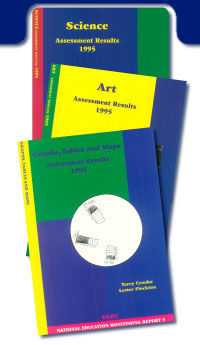
CLICK
on reports above to go directly to
comments |

Click
the Access Task icon for more information about those
tasks which are available to schools.
|
|
|
The three
reports on 1995 assessment results were considered by a national
forum of curriculum and assessment specialists, principals,
teachers, advisers and representatives of national educational
organizations. This supplement to the reports summarises
the forum’s comments. The three reports were examined
and commented on generally by the whole forum before being
considered by separate focus groups. Each focus group made
comments specific to their area of special interest and experience.
COMMENTS
FROM THE FULL FORUM:
Noteworthy features –
New Zealanders have always wanted to know about achievement
standards and the quality of education. The national monitoring
project is giving a rich picture of what students know, what
they can do and how they go about it.
The reports show that this project is a successful demonstration
of a major government policy to monitor student progress across
time in all curriculum areas. National monitoring, as it is
being done, has the potential to successfully contribute to
improvement of learning.
These first reports provide baseline information for looking
at trends in student achievement now and in years to come.
The forum strongly supports the importance of having national
data of this kind.
The sample of students involved in the programme is fully representative
of New Zealand students nationally. There is reassurance for
the community that New Zealand students, overall, are performing
well in many of the areas assessed.
|
| |
The
reports give valuable demographic information about groups
of students within the overall national picture. For example,
the achievement of girls compared with boys; larger schools
are compared with smaller schools.
The tasks proved excellent models of assessment. Students report
that they enjoy doing them. The tasks are valid. They focus on
important real life situations, knowledge and skills.
Use of video and analysis of observed performance is a major step
forward for assessment on this scale. It has contributed very largely
to the validity of the information.
The importance of motivation in learning and performance is treated
with particular care and skill in this assessment programme.
The cost-effectiveness of the project compared to overseas approaches
is especially noteworthy. As well as giving detailed information
on student performance, a large and vital contribution is being
made to teacher development and curriculum investigation.
The task administration and reports offer flow-on benefits for
teachers. They are well suited to supporting professional practice
in assessment. The research method is an excellent example of “assessment
for better learning”.
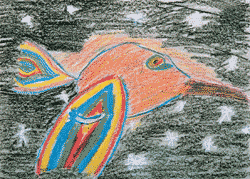 The
extensive collection of information offers scope for
unfolding in further detail the strengths and weaknesses
of students’ performance. In-depth analyses of
areas of strength and weakness can be taken form the
research. The
extensive collection of information offers scope for
unfolding in further detail the strengths and weaknesses
of students’ performance. In-depth analyses of
areas of strength and weakness can be taken form the
research.
In New Zealand there is a particular need to fully explore the
performance of Mäori students. The Project’s plans to
set up a lead group to assist with this development deserve support.
The reports provide a valuable guide for curriculum policy and
resourcing decisions, teacher training and development.
The innovative approach to assessment has been positively endorsed
by overseas experts. National monitoring has the potential to give
a lead to the international community.
Some thoughts
so far…
The new curriculum is likely to address some areas of learning
that have not been done so well in the past. For example,
the planning of science experiments, the understanding of
art works, the increasing complexity of graphing and comparing
pieces of information.
The demographic information clearly shows that social and
economic circumstances impact on students’ opportunities
to learn and succeed.
Girls are doing well but many tend to switch off in science.
The gap between Mäori and Pacific Island students compared
to others persists, but there is a suggestion that differences
are decreasing by the time they leave primary school.
|
|
COMMENTS
FROM FOCUS GROUPS |
 |
|
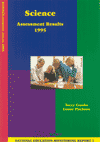 CLICK for
full report CLICK for
full report
|
SCIENCE
FOCUS GROUP
The assessment tasks have high validity in terms of
science education. They are largely practical. They
involved students in thinking and showing their understanding
of real rather than contrived situations.
Learning outcomes that are important for science learning
in New Zealand have been targeted. The tasks cover
a good cross section of the curriculum strands.
|
The
original data are so rich that they cannot be fully captured
in the reports. However, the reports give a snapshot
of important things that students know and can do well,
and those areas needing improvement.
Topics that are well understood by Year 4 and Year 8 students
include electric circuits and floating and sinking. Knowledge
of earth science was lower than other areas. Year 4 and
Year 8 students need to be encouraged to develop broader
ideas and understandings about environments such as river
estuaries.
Use of equipment, measurement and interpretation of results
are done well at both Year 4 and Year 8. The more sophisticated
ideas about ‘fair tests’ and checking results
by repeated measurements need emphasis in teaching and
learning. Some of the tasks showed that students need to
learn planning skills, particularly for open-ended investigations
and those done in group settings.
There is a clear advance in knowledge and skills from year
4 to year 8.
Girls view science less positively than boys and this is
reflected in lower achievement by girls at both Year 4
and especially Year 8. Continuing work is needed to reduce
this difference.
|
|
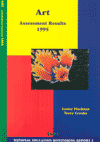 CLICK for
full report CLICK for
full report
|
ART
FOCUS GROUP
This report provides a very helpful national assessment
model for measuring student abilities across a wide range
of important art skills and knowledge.
From the data gathered and reported, we now have valuable
information to support qualitative judgements about student
achievement in art.
The results show that a majority of students enjoy participating
in art activities, and that there is some development
between Year 4 and Year 8. Overall, there is less growth
between years 4 and 8 than might be expected within this
essential learning area. |
New Zealand students are not doing so well in responding
to art, which is one of the two main strands of the art curriculum.
The whole area of artistic literacy requires special attention.
The report shows that students need help to be able to talk
with some knowledge and understand about examples of art
works and the relationships between art and culture. This
points to a focus for teacher development and the provision
of supporting resources.
We can celebrate the finding that factors such as race, gender,
school region, size or type appear to be unrelated to students’ achievements
in art.
The report reveals the challenge to build excellence in the
two key dimensions of an art education: making and knowing
about art. |
|
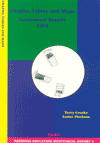 CLICK for
full report CLICK for
full report
|
GRAPHS,
TABLES and MAPS FOCUS GROUP
The essential skills of reading, constructing and interpreting
graphs, tables and maps cut across several curriculum
areas. The assessment tasks represent a wide range of
everyday information.
Special features of these tasks are that many have been
presented orally, in small groups and individually. Novel
approaches have made the tasks interesting and accessible
for students. The tasks have been administered in ways
that don’t disadvantage poor readers. |
About 90 percent of Year 8 students are able to complete
a bar graph and interpret a simple graph, an air timetable,
a floor plan, a flow chart and a table of figures.
The results tend to confirm the good achievements that New
Zealand students of a similar age scored in the 1990-91 international
reading literacy survey. By the end of primary school, most
New Zealand students have mastered the essential skills of
extracting and interpreting information from graphs, tables
and maps.
Year 8 students fount it somewhat more difficult when (i)
there were more than two operations involved; (ii) they were
asked to extrapolate or make a generalisation or identify
trends implicit in the information; (iii) the material contained
a large amount of information additional to the task, yet
typical of everyday material.
While students of Year 4 do well at these tasks there is
substantial growth in skills from Year 4 to Year 8. On average,
about 10 percent growth per year.
Although most students were able to construct graphs to illustrate
given data, their labelling of axes was often overlooked.
Student’s ability to read and air NZ timetable stood
out in particular.
New Zealand newspaper and magazine editors can have confidence
that most New Zealand adults of the future will be able to
interpret material presented in graphs, tables and maps. |
|
TEACHERS
SAY: Comments from the classroom teachers attending the forum |
 |
|
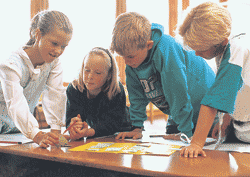 WHAT'S
SO GOOD ABOUT NEMP? WHAT'S
SO GOOD ABOUT NEMP?
• The project
gives credence to cultural and gender values.
• Teachers are involved in task development
• The tasks have undergone detailed trailing during their
development.
• Tasks are interesting. Students are motivated to do well.
• Tasks are practical and focus on important curriculum outcomes.
• The range of tasks gives a picture of a good cross section
of the curriculum.
What good things do the
reports show that are happening in our classrooms?
• There is clear evidence of growth in knowledge and skills
over the year 4 period.
• Parents can make choices of schools knowing that the type
of size of school is not likely to affect their children’s
education.
• Students responded well to the many practical tasks of
the kind that are advocated in the new curriculum.
What we need to do?
• Recognise the value and importance of National Monitoring
as it has been administered.
• Identify and acknowledge areas of concern for further and
future professional discussion and attention within our schools.
For example, the performance of girls in science, and students’ ability
to talk about art.
• Take particular note of the resource implications for achieving
educational standards.
• Accept that schools in socially or economically disadvantage
areas require special understanding, support and resources to help
them lift the performance of their students.
Credibility?
As classroom teachers, we trust these reports and national monitoring
because:
• There is high quality advisory input and expert leadership
of the project.
• All national curriculum subjects will be covered in a 4-year
period
– NEMP recognises a balanced curriculum for all students.
• The tasks reflect the important learning outcomes of national
curriculum.
• The assessments cover of a broad range of what we as teachers
and parents are wanting students to achieve.
• The tasks represent practical, hands-on learning.
• Tasks are interesting and motivating for boys and girls.
 •
Enjoyment is understood as in important factor that contributes
to learning and success. •
Enjoyment is understood as in important factor that contributes
to learning and success.
• The tasks are carefully developed and tested before large
scale use.
• Video recorded interviewing helps standardise task administration
and marking.
• Low achieving students enjoyed the tasks.
• Students felt positive about being assessed.
• Co-operative group skills are assessed nationally for the
first time.
• NEMP values the work of teachers: assessment is carried
out by teachers and marked by teachers who are given special training
and guidance.
• This project gives teachers excellent opportunities for
professional development in curriculum related assessment.
• The reports give useful models for teachers to follow.
• The reports will help teachers to carefully review and
discuss some important aspects of learning.
• NEMP assessment gives schools procedures and data useful
for school-based self-review.
• The project offers a great chance for New Zealand to be
at the forefront in the world of assessment.
|
 |
| |
|
 WHAT'S
SO GOOD ABOUT NEMP?
WHAT'S
SO GOOD ABOUT NEMP?  •
Enjoyment is understood as in important factor that contributes
to learning and success.
•
Enjoyment is understood as in important factor that contributes
to learning and success.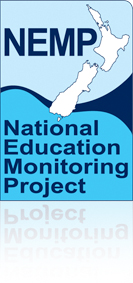

 The
extensive collection of information offers scope for
unfolding in further detail the strengths and weaknesses
of students’ performance. In-depth analyses of
areas of strength and weakness can be taken form the
research.
The
extensive collection of information offers scope for
unfolding in further detail the strengths and weaknesses
of students’ performance. In-depth analyses of
areas of strength and weakness can be taken form the
research.

